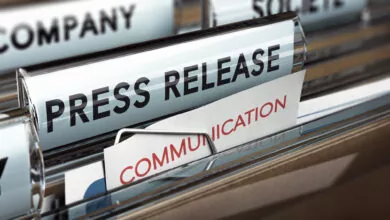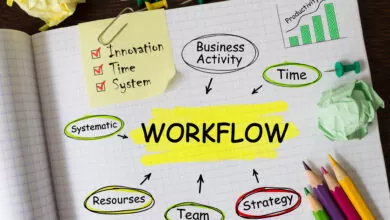HR Made Easy: How To Streamline Onboarding For New Employees

Did you know that over six million new employees were hired last month? The process of onboarding these new hires can often make or break a business. If it takes too long, then you’re harming the new employee’s ability to make meaningful contributions to their job.
However, if you rush it, then there’s a high chance that they’ll make mistakes and find a new job. So, how do you go about streamlining onboarding for new employees in a way that’s comprehensive, but quick?
Simple: you read this article! In it, we’ll explore various ways that you can make your onboarding process as quick and painless as possible. But first, let’s go over some definitions and why onboarding is important in the first place.
What is the Process of Onboarding for New Employees?
Many people think that onboarding is just the process of getting important tax information from the new employee, and training them a bit. While these are certainly components of onboarding, it’s not the only goal.
Ultimately, onboarding is used to help new hires adjust to their jobs properly. It covers a broad spectrum of the skills, knowledge, and responsibilities of their new job position.
However, it’s also to make sure that they understand the values of the company and the social elements of the office they’ll be working in. When onboarding is done right it’s guaranteed to improve the long-term productivity of these new employees.
How Long Does Onboarding Usually Take?
If you want to do onboarding right, then it’s important not to rush it. However, you might still be curious how long the average onboarding process takes. There’s no easy answer to this question because it varies from company to company.
If a business is rushing its onboarding process, then it will likely only take a day or two. However, most companies spend a week or two with onboarding. In some cases, it can even take months or more.
So, why such a variation in time? It’s because certain jobs require a lot more training than others. Most positions can usually be grasped within a week or two.
But, some more complicated ones take a lot longer than that. As such, you should factor in the position and adjust your onboarding process accordingly.
Why Is Employee Onboarding So Important?
There are a lot of benefits that come with prioritizing your onboarding program. For starters, it shows your new employees that you value them. Nothing is more alienating than getting to a job and feeling lonely and unclear on your role.
After all, a job change is a big adjustment. As such, you should make the process as easy as possible. Doing so will help your new employee know that they made the right decision by switching jobs.
It also helps you get the most out of your employee’s time. Without a dedicated onboard training process, the new employee will likely need to ask a lot of questions.
Or, worse, they’ll make mistakes and need to re-do an entire project. By properly training them, you ensure that they are fully equipped to do their job properly. Finally, it reduces the number of new hires that suddenly leave a new job right after getting hired.
Did you know that roughly 29% of new employees will end up leaving their job within the first ninety days? This is often devastating for several reasons.
For one thing, you just spent a lot of time and resources finding, hiring, and training that individual. However, what’s worse is the fact that you now need to do the whole process over again.
As such, anything that prevents this problem from happening is well worth your time and consideration.
Before Onboarding Happens There Need to Be Pre-Boarding
If you dive right into onboarding without preparing, then it’s going to be a chaotic and unproductive time. So, to avoid this you should engage in pre-boarding. This is the process of gathering everything that you will need to train the new hire.
Pre-boarding likely involves creating your training videos, making courses, and writing a handbook about company culture. It’s also important to gather all of the paperwork that you will need from the individual before they can start working for you. These documents include:
- Form W-4 – details the amount of taxes that are withheld from the employee’s wages
- Form I-9 Employment Eligibility Verification – makes sure the employee can work in the US
- State withholding forms – might be needed depending on your state
- Non-disclosure agreements – if they’re needed
- Emergency contact information – in case you need to contact their loved one
In addition to the above-mentioned documents, there are other pre-boarding tasks that can be managed with HR software to avoid manual errors. Using HR software managers can easily collect and store all necessary paperwork and information for new hires, including tax forms, employment verification, and emergency contacts. Sense HR is one such solution for managing pre-boarding processes and delivering a rewarding new starter experience. Visit https://sense.hr/ to learn more about the customizable workflows of HR software to streamline the pre-boarding process and ensure that all necessary tasks are completed on time.
Automate the Onboarding Process Using HR Software
In the past, HR departments would need to manually file and process any important paperwork for the new hire. However, these days that simply isn’t necessary.
The reality is that there are lots of great HR software programs that handle all of the boring stuff involved in hiring a new person. One great example is WorkBright.com. This resource does things like:
- Provide email reminders to new staff
- Screens for tax credits
- Make data adjustments for multiple people
- Track the hiring process
- Transfer information
- Report and export any data that you’ve gathered
Not only does this automation make your life easier, but it also allows you to process information much more quickly. As such, we recommending investing in some good HR software before proceeding with the onboarding process.
Go With Digital Resources Over Print Ones
Imagine this: it’s your first day on the job and you’re feeling overwhelmed. Then, the person in charge of training your hands you a stack of papers containing all information you’ll need.
Not only does this exasperate someone who’s probably already pretty nervous, but there’s also a huge chance that they might lose or misplace one of the resources you’ve given them. So, instead of handing your new hire a stack of newsletters, forms, and handbooks, send them links to these documents.
This is ideal for multiple reasons. For one thing, they can’t lose them because they always have access to the links. It also gives them the ability to read it on their own time when they’re ready.
Finally, it’s better for the environment since you aren’t printing out a bunch of paper that will likely eventually get thrown out.
Utilize a Lot of Different Learning Tools
It’s important to remember that not everyone learns at the same pace. What’s more, some people learn in different ways. For example, left-brain individuals might learn best by reading the information in an educational manner similar to a lecture. However, this doesn’t always work for right-brain individuals.
These people usually prefer a more visual style of learning. So, what’s the solution? We recommend incorporating multiple tools to appeal to the variety of different learning types.
This means investing in a variety of learning resources — from traditional hands-on learning sessions to videos, animation, and even interactive games. This variation will not only appeal to the different learning types, but it will also make the onboarding process a lot more fun and interesting.
Breakdown Employee Onboarding Into Multiple Sessions
The human brain can only take so much information at a time. When you combine this with first-day nerves it leads to a habit of new employees missing a lot of information at the start of the job.
As such, it’s vital to not info dump on the new employee during the first day or two of their new position. Instead, set a training session schedule that unfolds over a few weeks or months (depending on how complex the job is).
Make sure that in addition to introducing new elements you’re also reinforcing what was taught during the previous session. This is ideal because it’s a much more efficient way to learn the roles and details that come with the position.
It doesn’t place a ton of pressure on the individual to learn everything half as well in a day or two. The only downside is it does extend the onboarding process by a bit.
However, when you factor in the improved productivity, decreased confusion, and increased wellbeing, then it’s easy to see why it’s worth it.
Want More Content? Keep Reading
We hope this article helped show you some ways to streamline onboarding for new employees. It’s easy to forget just how stressful it is being at a new job.
As such, you want to make sure that you do everything in your power to make sure that the new employee is both equipped and comfortable at their new job. And, the key to doing this is with a comprehensive onboarding strategy that can be tailored to all new employees.
So, get creative and make an onboarding plan that aligns with your company’s goals and values. Did you enjoy this article? If the answer is yes, then you’re in the right place. Keep exploring to find more topics that you’re sure to love.
Read More: Who is Phyllis Fierro





